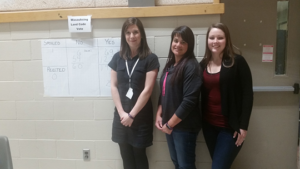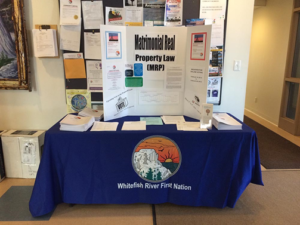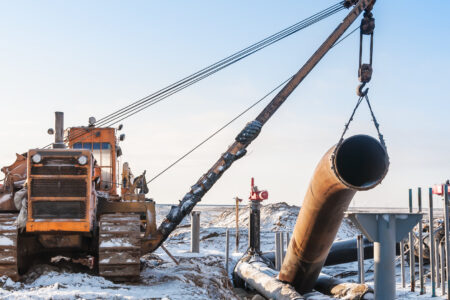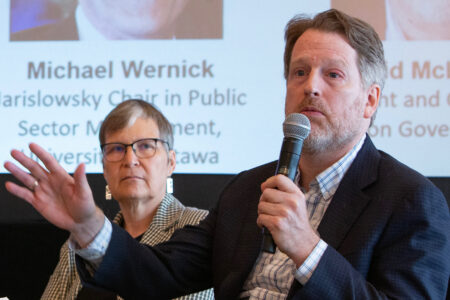
Today, more than 50 First Nations in Canada have deployed online voting, and many more communities are looking to follow suit. Online voting is seen as a way to promote voter access (particularly among off-reserve members) and to boost turnout, engage youth, enhance self-determination and modernize voting processes. But while online voting is used during referendums, ratification and agreement votes, and for topics such as constitutions, real matrimonial property, land codes, court laws and other policies or agreements, it has been deployed in only a handful of cases for chief and council elections. In part this is because some communities are keen to try a phased approach, where they evaluate how well online voting works in their community before deploying it in a binding election. In many cases, however, First Nations are prevented from using online voting in elections because of the Indian Act, or the more recent First Nations Election Act, neither of which includes a provision for the use of alternative voting methods.
Of the 634 First Nations in Canada, 182 communities have their elections governed by the Indian Act and an additional 41 have opted in to the First Nations Election Act since it came into force in 2014. While many communities no longer rely upon the Indian Act itself to govern their elections, the primary alternative has been the writing of custom community electoral codes on an individual basis, many of which are based on the model set out in the Act. As things currently stand, only communities that have already passed their own electoral codes or self-government agreements, which include the possibility of online voting, can offer the voting method in elections.
Constrained by the Act, communities wanting to adopt online voting are left with the option of using the technology for other types of votes not covered under the law’s purview. Because of this, online voting is taking shape differently, and taking hold more slowly, than it otherwise might. Should First Nations be limited from innovating, modernizing their election processes and potentially better reaching members because of this anachronistic legislation?
Given the government’s narrative of reconciliation and support for a nation-to-nation approach to working with Indigenous communities, there is a timely opportunity to reform both the Indian Act and the First Nations Election Act to give First Nations the autonomy to decide for themselves which voting methods work best for their community. Our research into the effects of online voting in community elections and votes, part of a SSHRC-funded project entitled “The Impact of Digital Technology on First Nations Participation and Governance,” emphasizes the salience of the voting method in enabling communities to pass legislation and enhance their self-determination. Specifically, it is seen in many communities as a key tool to engage members, notably those living off-reserve, to meet voting thresholds required to pass legislation and to build community capacity.

Engaging membership is a crucial element in decision-making and building governance capacity, yet participation in elections and votes can be a challenge; turnout ranges from 6 to 90 percent, depending on the community. Engaging off-reserve members has been an ongoing hurdle for some First Nations. Offering online voting — which allows for a ballot to be cast remotely via an Internet connection — reduces the costs of voting for off-reserve members who would otherwise have to travel to the community to cast a ballot, or who would vote by mail if that option is available. Although voting by mail is one remote option, travel to a post office takes longer than using your computer or smartphone from the comfort of home or work. Preliminary research finds that off-reserve members are the more likely users of online voting and are drawn to the voting method for its convenience and access. Furthermore, in some communities there is a clear preference for remote voting methods. In a recent land code referendum in Wasauksing First Nation, for example, 60 percent of all votes cast came in remotely: half online and half by mail-in ballot. (Land code referendums occur when First Nations choose to opt out of Indian Act land management and create their own codes under the First Nations Land Management Act.)
Even First Nations members who vote by paper tend to support the introduction of online voting as a complementary voting method. In a recent exit poll of voters in a land code referendum, 63 percent of those surveyed reported that they would consider using it in the future, mostly in “special circumstances” including inclement weather, when a person has mobility issues or when a voter is simply “too busy” to make it to a poll location.
Adoption of the technology is also seen as a mechanism to enhance self-determination. In January 2014, Nipissing First Nation used online voting to support the passage of its Chi-Naaknigewin (constitution), a key step to replacing the Indian Act and allowing the community to establish its own laws and policies. Whitefish River First Nation also used online voting to pass its Matrimonial Real Property Law in March 2015. The quorum of at least 25 percent participation for successful ratification is set out in the Family Homes on Reserves and Matrimonial Interests or Rights Act, and online voting helped make it possible to meet this threshold. Likewise, Shawanaga First Nation and Wasauksing First Nation deployed online voting in hopes of increasing participation and successfully passed their own land codes in May 2015 and February 2016 respectively. These are just some cases, spanning Ontario and British Columbia, where online voting has played a role in advancing member engagement and supported meeting quorum.

In addition, online voting has been noted to enhance community capacity by bringing segments of the community together that might not have interacted otherwise. In Whitefish River, band administration cited online voting as a policy change that brought together youth and elders in meaningful dialogue. Similar effects of connecting different segments of the community have been observed in other First Nations.
These examples illustrate that online voting carries important implications for empowerment and self-determination. It also raises questions about whether online ballots could be equally useful in chief and council elections to enhance inclusion and equality of the voting process by improving voter access and increasing voter participation. While there are grounds to think that online voting could be beneficial in electing community leaders, it is wise to move cautiously. Chief and council elections can be contentious, and critical issues often arise regarding the eligibility and participation of off-reserve members. Introducing online voting in such contexts could intensify conflict and deepen divisions rather than contribute to community capacity. Building a solid foundation of trust and collective support for online voting should be the first step.
Of course, there are concerns about “nontraditional” voting systems. Technologies can interfere with the restoration of traditional political values and practices, and community members might not all have access to good Internet connections and/or knowledge about how to use digital devices. Still, there is an opportunity to have online voting play a role in moving past the current legislative framework defined by the Indian Act and toward self-determination by allowing its use as a complementary voting method.
At the core of the dialogue around reconciliation is the oft-repeated commitment to Indigenous self-determination and, by extension, self-government. In order to achieve this goal, First Nations need to have the tools at their disposal to govern themselves. This includes electing their own leaders, ratifying agreements and constitutions, and taking part in referendums through which they can establish their own laws, policies and legal codes. Communities are moving forward with this work, with more and more doing so each year; however, the Indian Act and the First Nations Election Act limit their ability to modernize voting processes. There is an important opportunity to give all First Nations governed by these Acts greater choice in the voting methods used in their elections. Through engaging off-reserve members, building capacity and supporting the passage of key legislation, online voting can help make Indigenous communities better able to govern themselves on their journey toward self-determination.
This article is part of the special feature The Indian Act: Breaking Its Stubborn Grip.
Photo: Shutterstock, by Creativa Images
Do you have something to say about the article you just read? Be part of the Policy Options discussion, and send in your own submission. Here is a link on how to do it. | Souhaitez-vous réagir à cet article ? Joignez-vous aux débats d’Options politiques et soumettez-nous votre texte en suivant ces directives.















